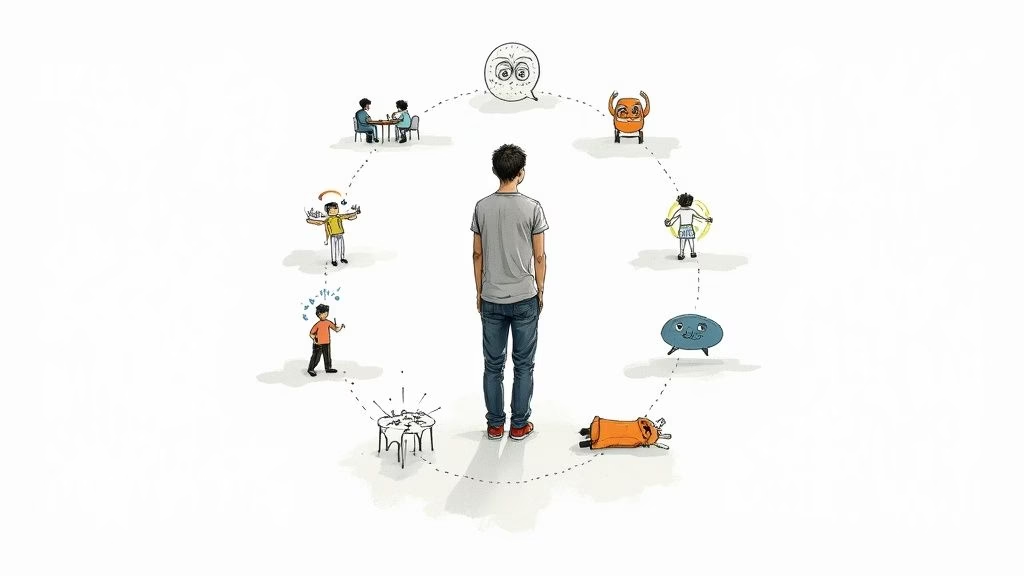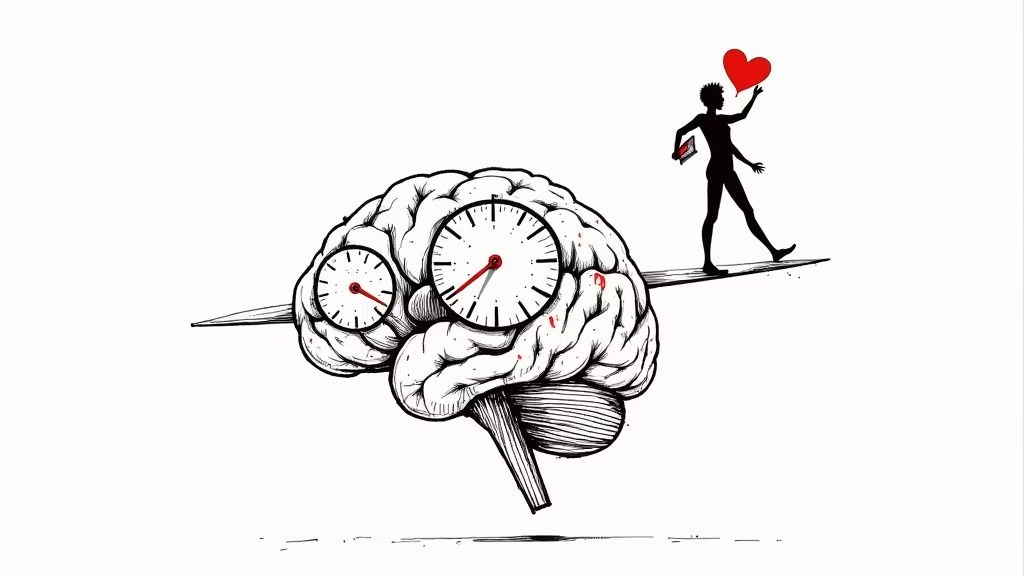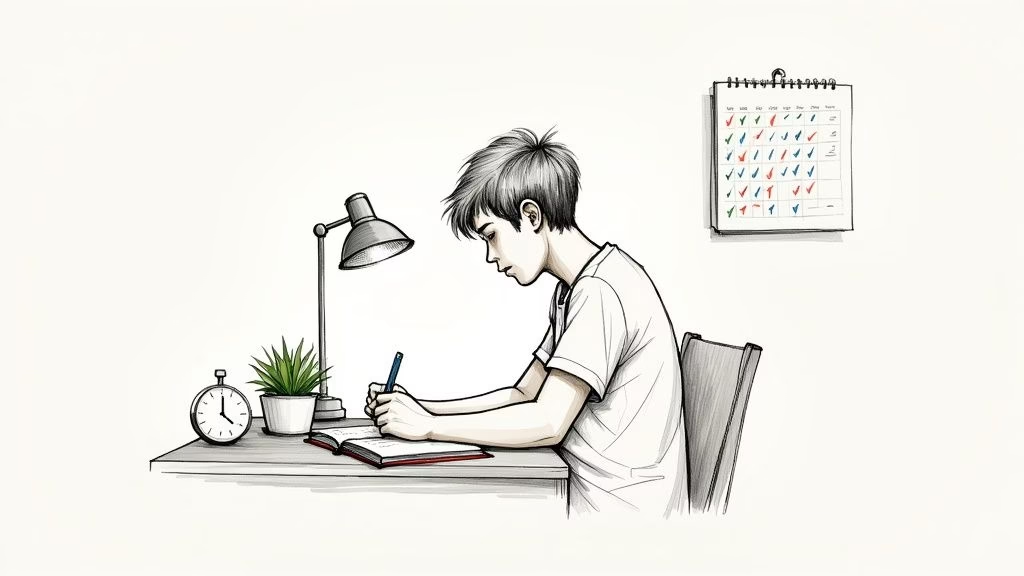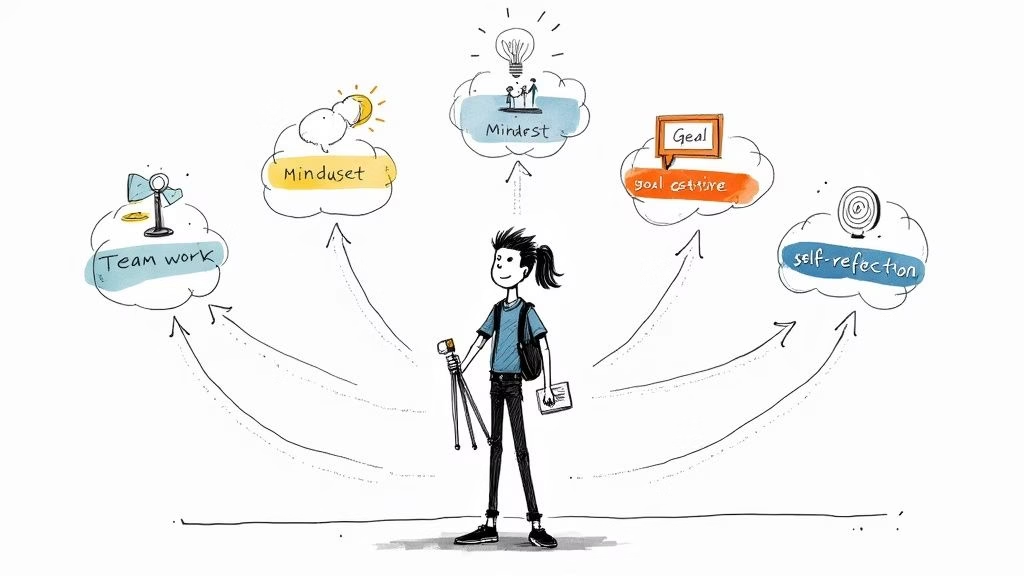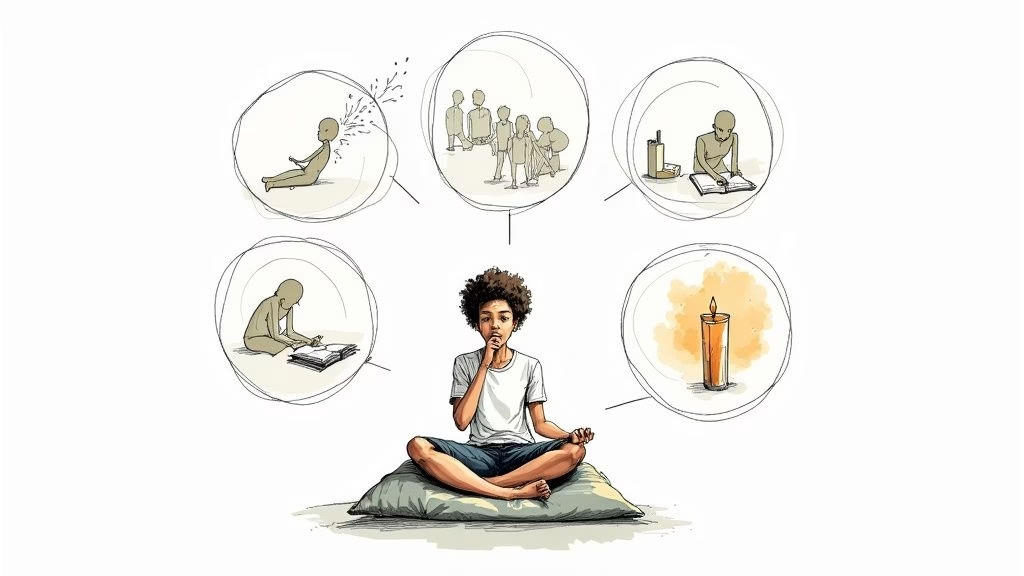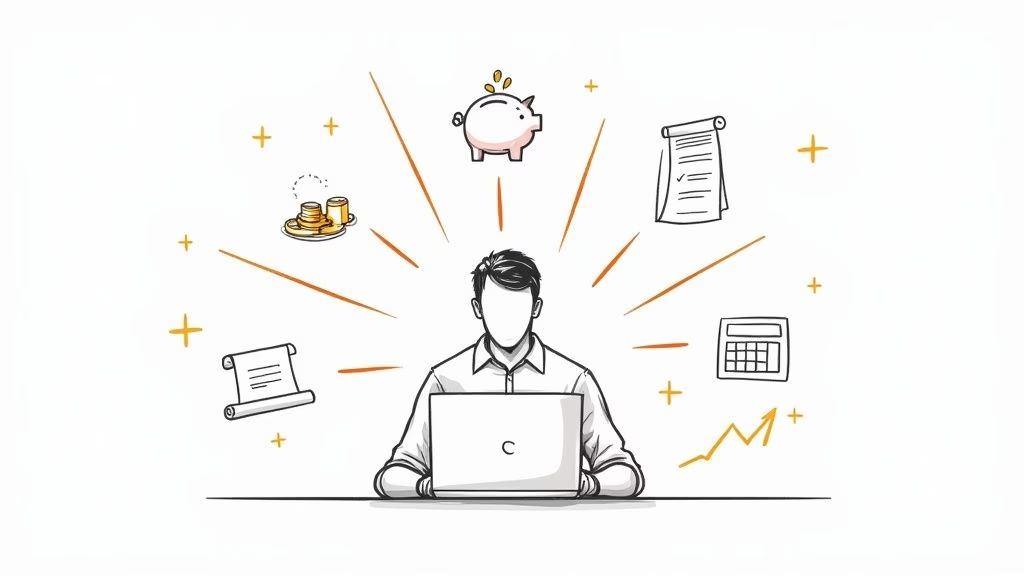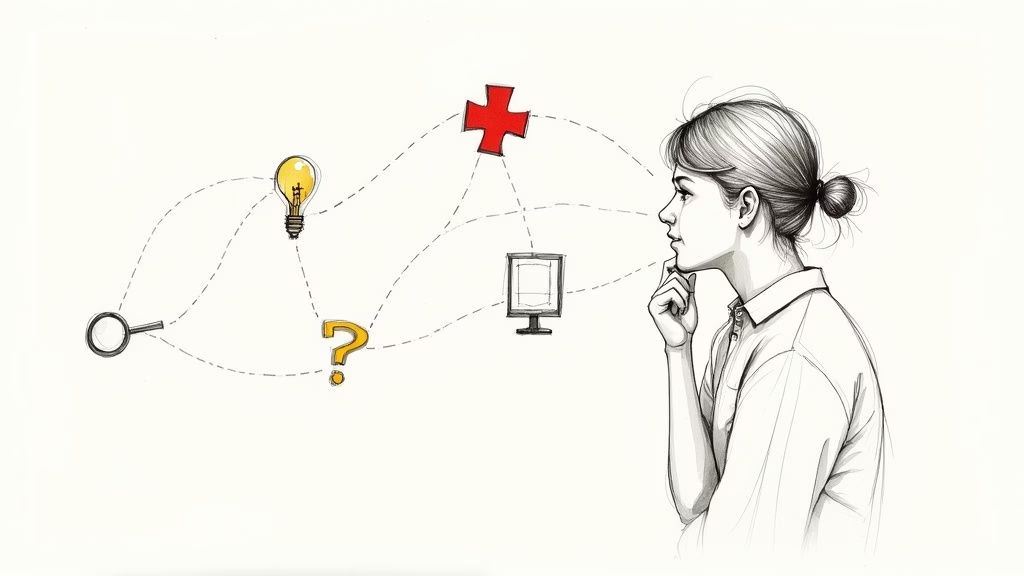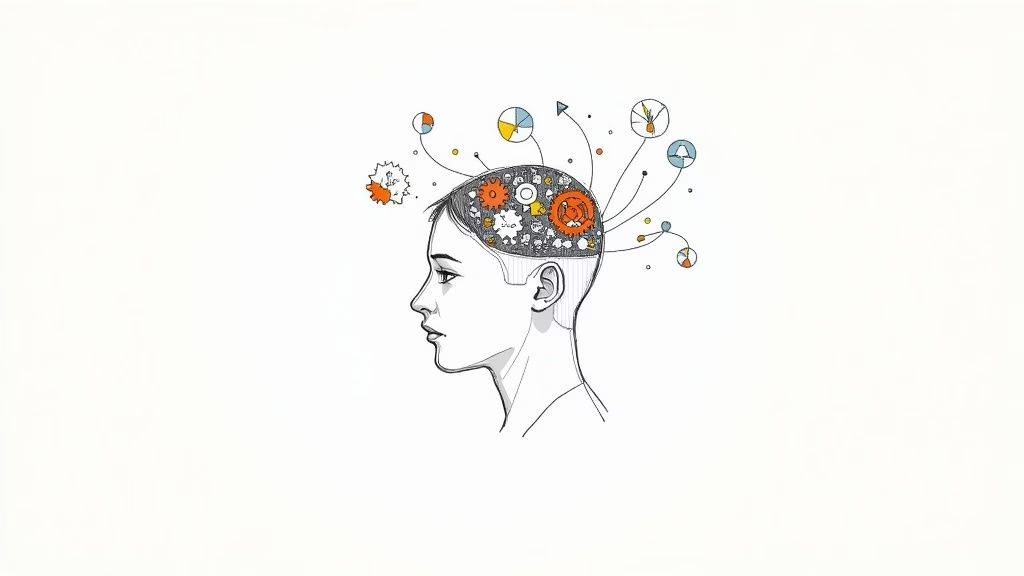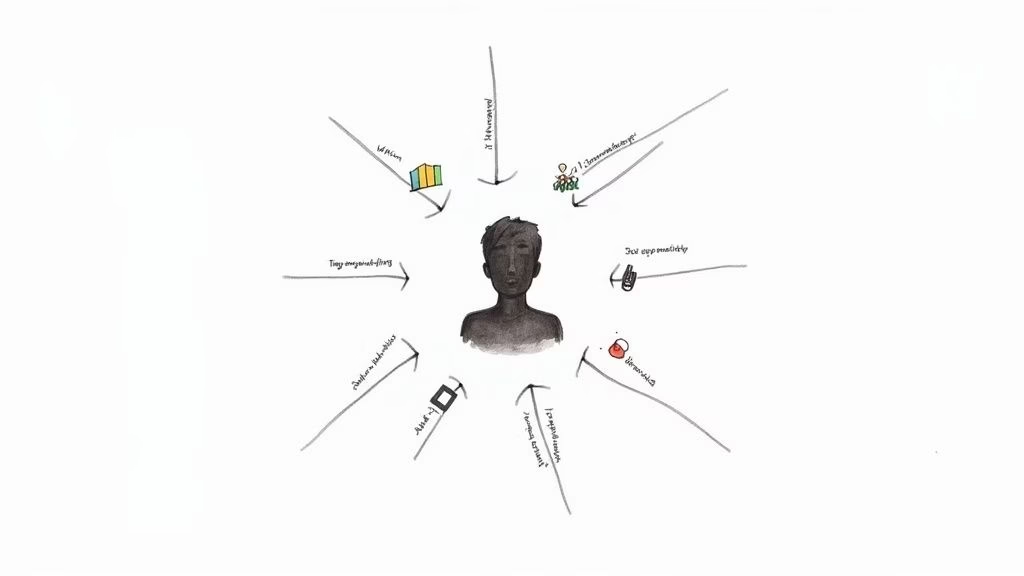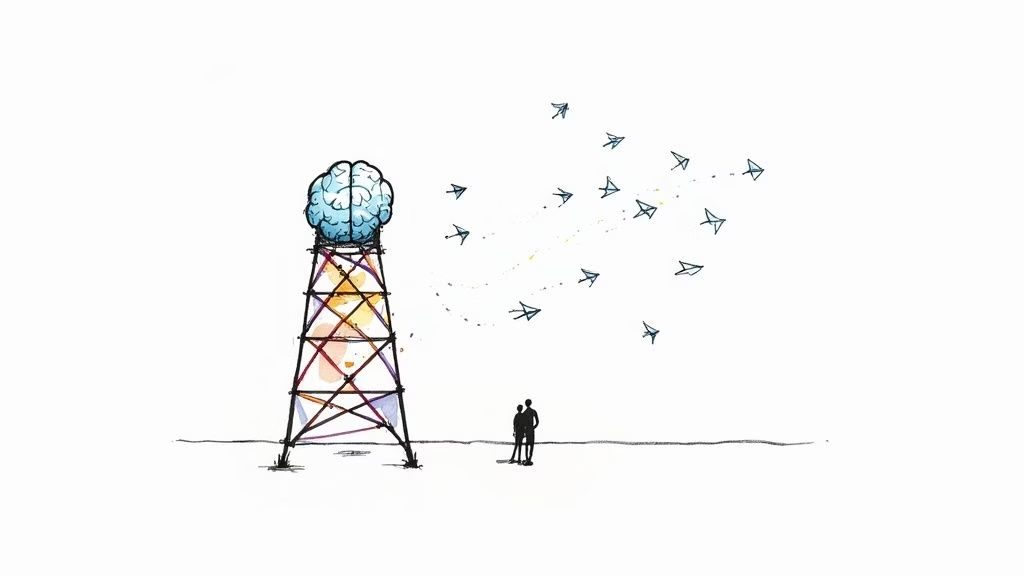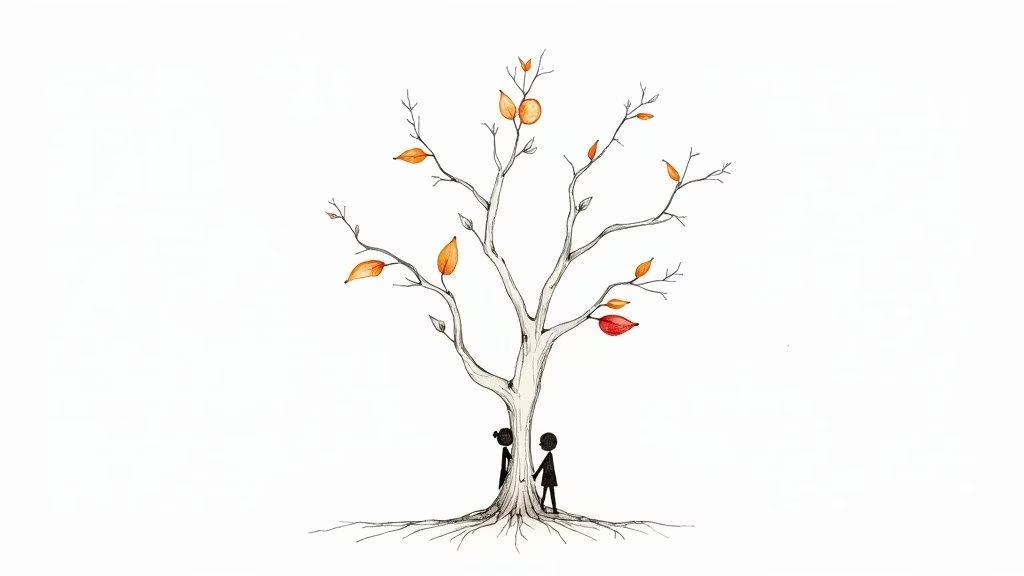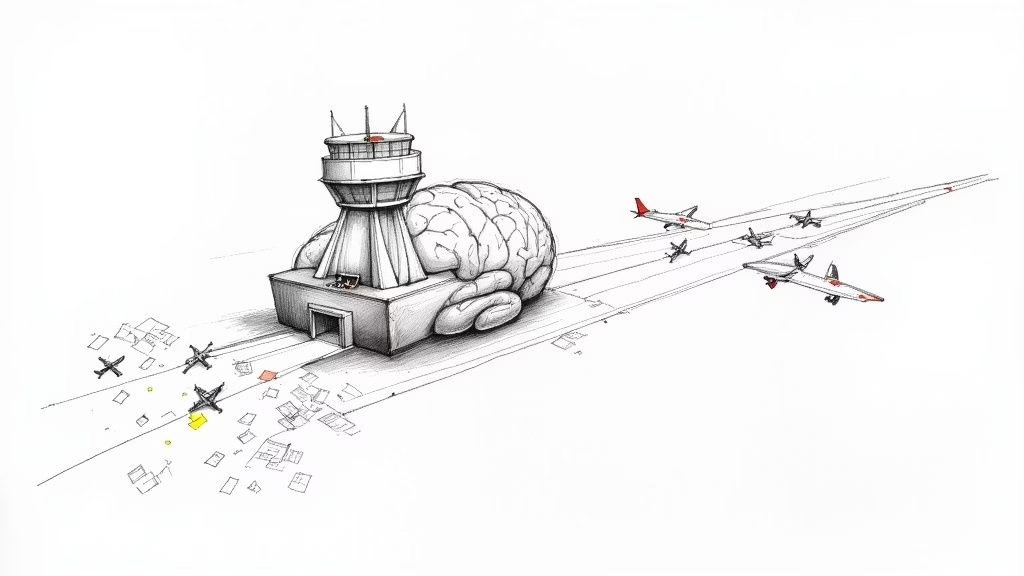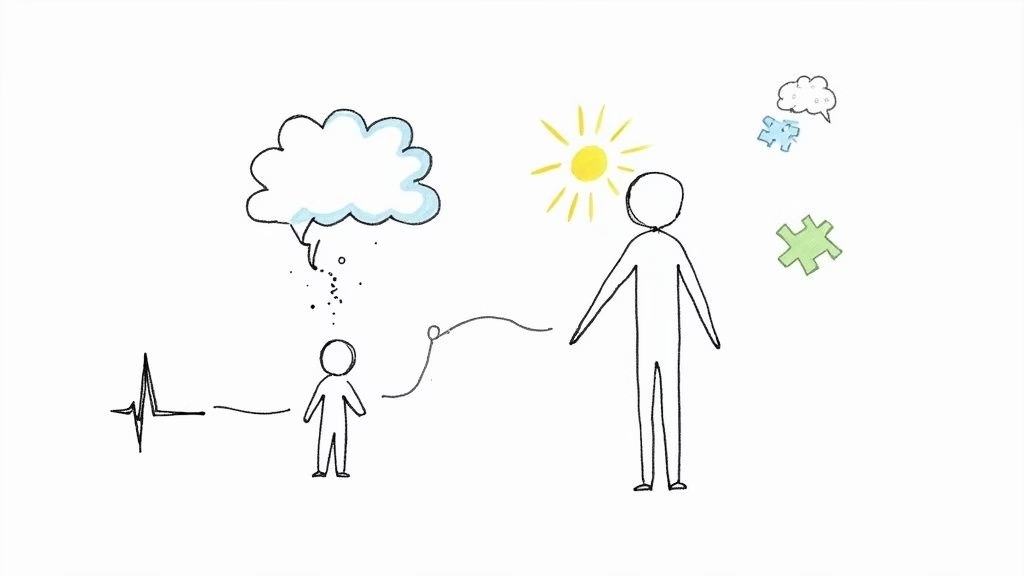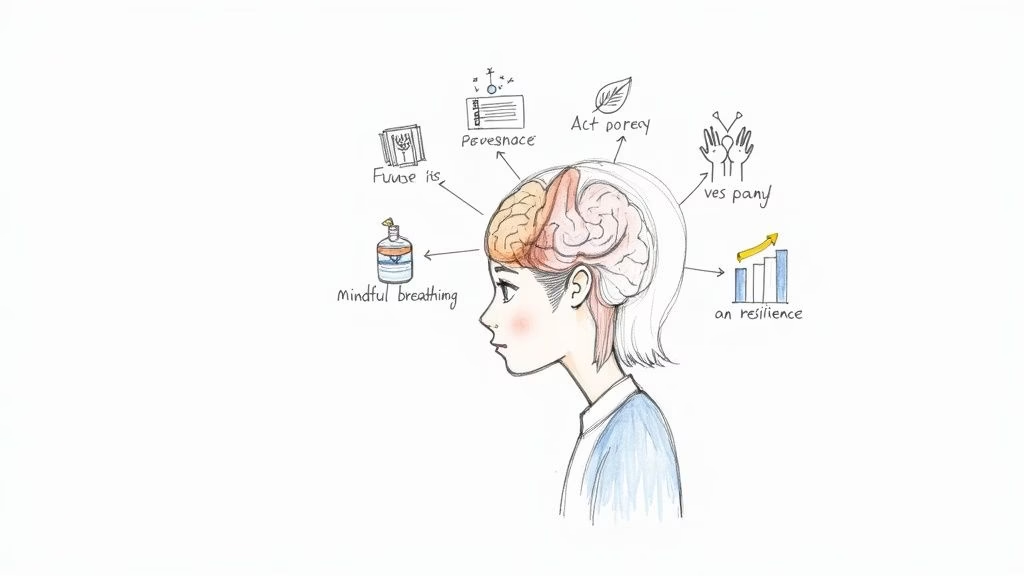The teenage years are a whirlwind of academic pressure, social changes, and personal growth. It's a time of immense opportunity, but it can also bring significant stress. Juggling schoolwork, extracurriculars, friendships, and future plans often leads to feelings of overwhelm, which can fuel procrastination and impact both motivation and well-being. This guide is designed to provide actionable stress management techniques for teens, offering a diverse toolkit to build resilience, improve focus, and regain a sense of control.
We'll move beyond generic advice and dive into practical strategies you can implement immediately. This article explores concrete methods that help you get out of your head and into your body, from structured meditation guides and nature walks to powerful time management tools like the Pomodoro Technique, designed to make studying feel less intimidating. You will learn how to build strong support networks, whether with family, friends, or specialized resources for young men, and discover creative outlets for expressing your feelings.
Each technique is a step toward not just coping, but thriving. We'll also touch on creating a calm environment to support these practices. For instance, establishing a relaxing atmosphere can be as simple as finding the right sensory cues; to start, you might explore various stress relief candle scents that are known to promote a sense of peace. Consider this your roadmap to navigating challenges with confidence.
1. Mindfulness Meditation: Finding Calm in the Present Moment
Mindfulness meditation is a powerful practice that trains your brain to focus on the present moment without judgment. Instead of getting caught in a spiral of worries about a future exam or replaying an awkward social interaction, mindfulness helps you anchor yourself in the here and now. This technique is one of the most effective stress management techniques for teens because it creates a mental pause between a stressful event and your reaction to it, giving you the power to respond thoughtfully instead of reactively.
The goal isn't to empty your mind, but rather to observe your thoughts and feelings as they come and go, like clouds passing in the sky. This practice can significantly reduce feelings of being overwhelmed, improve focus for schoolwork, and decrease symptoms of anxiety. In fact, many resources specifically detail the benefits of meditation for anxiety relief, showing how it calms the nervous system.
How to Get Started with a Simple Meditation
You don’t need a special room or equipment, just a few minutes and a willingness to try. This simple guide can help you begin your practice.
- Find a Quiet Spot: Sit comfortably on a chair or the floor where you won't be distracted for 3-5 minutes.
- Set a Timer: This allows you to relax without worrying about the time.
- Focus on Your Breath: Close your eyes and bring your attention to the sensation of your breath entering and leaving your body. Notice the rise and fall of your chest or belly.
- Acknowledge Wandering Thoughts: Your mind will wander. That's completely normal. When you notice your thoughts have drifted, gently and without judgment, guide your focus back to your breath.
By practicing regularly, you build mental resilience, making it easier to navigate academic pressure and social challenges. Learn more about the specific benefits of meditation for teens and how to build a consistent practice.
2. Physical Exercise and Movement: Shaking Off the Stress
When you’re feeling overwhelmed by schoolwork or social pressure, one of the best stress management techniques for teens is to get your body moving. Physical exercise is a natural and highly effective way to combat stress, triggering the release of endorphins, which are your brain's feel-good neurotransmitters. It simultaneously helps reduce the body's stress hormones like cortisol and adrenaline, providing both immediate relief and building long-term mental resilience.
Moving your body provides a powerful way to get out of your head and into the present moment, offering a productive break from cycles of worry. It addresses the physical restlessness that often comes with anxiety and can improve sleep quality, which is crucial for managing stress. Programs like Michelle Obama's 'Let's Move!' campaign and teen-friendly workouts from coaches like Joe Wicks have highlighted how movement is a cornerstone of both physical and mental well-being.
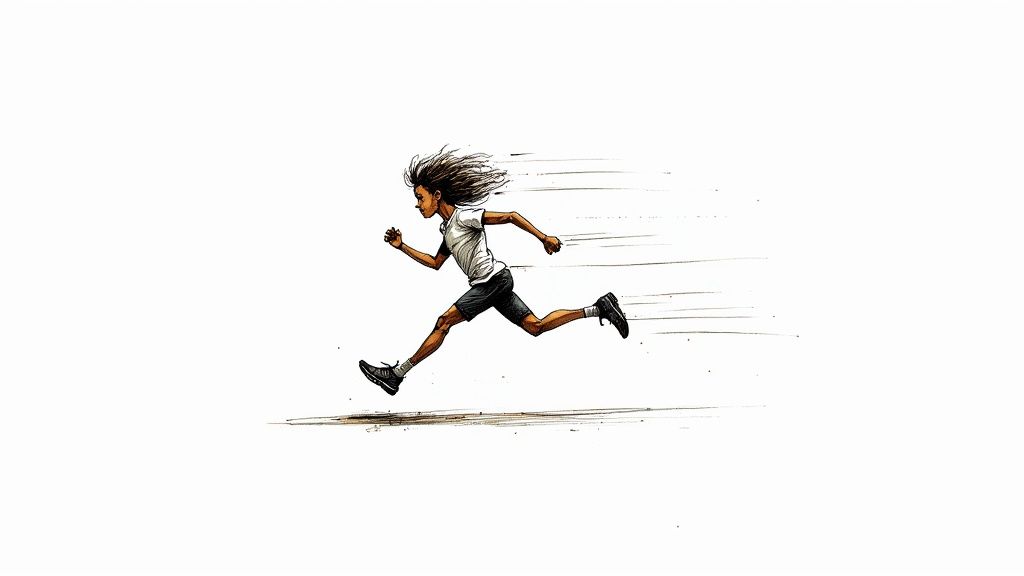
How to Get Started with Movement
You don't need a gym membership or expensive equipment to benefit from physical activity. The key is to find something you enjoy and make it a regular part of your routine.
- Start Small with Nature Walks: If you're feeling unmotivated, begin with a simple 15-minute walk outside. Focusing on the sights and sounds of nature is a great way to practice mindfulness while moving your body.
- Choose Activities You Enjoy: The best exercise is the one you’ll actually do. This could be anything from dancing in your room and shooting hoops with friends to skateboarding, joining a school sports team, or following a yoga video online.
- Schedule It In: Treat exercise like a non-negotiable appointment. Block out 30 minutes in your calendar a few times a week. This makes it a priority, not an afterthought.
- Combine with Friends: Turn exercise into a social activity. Plan a hike, go for a bike ride, or join a local class together. This adds accountability and makes it more fun.
By incorporating regular physical activity into your life, you build a powerful tool for managing academic pressure, improving focus, and boosting your overall mood. Discover fun, teen-focused workouts on platforms like Yoga with Adriene, which offers free routines for all levels.
3. Journaling and Expressive Writing: Unpacking Your Thoughts on Paper
Journaling is a private, powerful tool that involves writing down your thoughts, feelings, and experiences to process them more clearly. Instead of letting worries about school, social drama, or your future swirl around in your head, journaling helps you get them out onto paper where they seem more manageable. This technique is one of the most effective stress management techniques for teens because it provides a judgment-free space to explore complex emotions, organize your thoughts, and identify the root causes of your stress.

The goal isn't to write a perfect essay, but to create an honest record of your inner world. This practice helps untangle anxious thoughts, making it easier to see patterns in what triggers your stress and how you react. Research by James Pennebaker on expressive writing has shown it can improve both mental and physical health by reducing the cognitive load of unprocessed emotions. Many successful individuals even credit teenage journaling with helping them navigate difficult periods and build self-awareness.
How to Get Started with a Simple Journaling Practice
You don’t need a fancy notebook or pen, just a few minutes each day to connect with yourself. This simple guide will help you begin.
- Set Aside 10-15 Minutes: Find a consistent time, like before bed or right after school, to create a routine.
- Try a 'Brain Dump': Set a timer for five minutes and write continuously without stopping or editing. Write whatever comes to mind, even if it’s "I don't know what to write." This helps clear mental clutter.
- Use Prompts if You're Stuck: Sometimes, a blank page can be intimidating. Start with simple prompts like, "What stressed me out today was…" or "Three things I'm grateful for are…"
- Keep it Private: Knowing your journal is a secure space encourages honesty. Don't worry about grammar or spelling; this is for your eyes only.
By making journaling a regular habit, you build a stronger understanding of yourself and develop a reliable outlet for managing academic pressure and emotional challenges. Reviewing past entries can also reveal incredible personal growth over time.
4. Deep Breathing and Breathwork Techniques
Deep breathing techniques are one of the most accessible and immediate stress management techniques for teens because they directly influence your body's physiology. By consciously controlling your breath, you activate the parasympathetic nervous system, which acts like a brake on your body's stress response. This sends a powerful signal to your brain that you are safe, helping to lower your heart rate, reduce blood pressure, and calm feelings of panic or being overwhelmed.
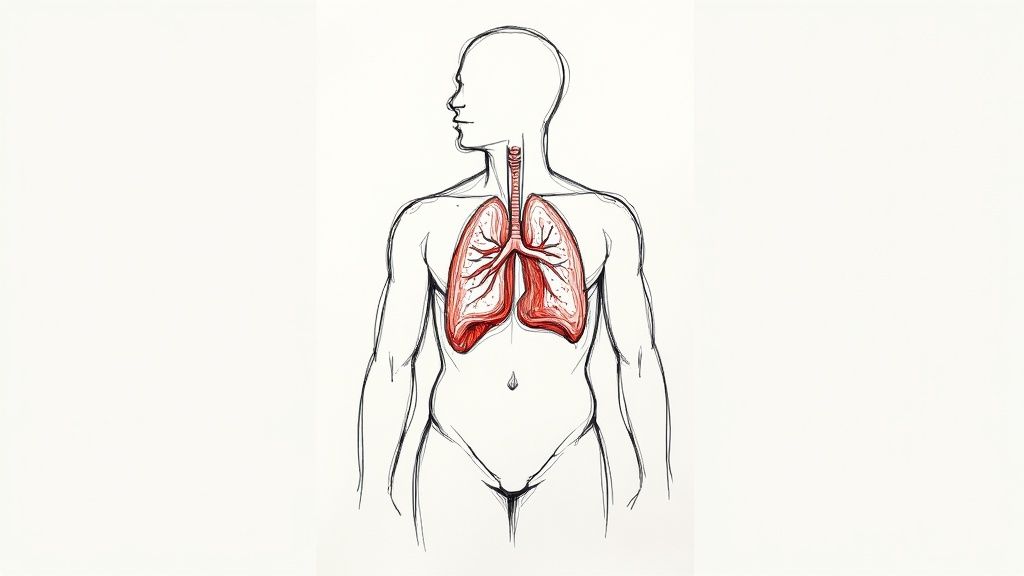
The best part is that you can use breathwork anywhere, anytime, without anyone knowing. Feeling anxious before a big test or a social event? A few cycles of controlled breathing can make a huge difference. U.S. Navy SEALs famously use "box breathing" to stay calm and focused during high-stakes operations, a testament to its effectiveness under pressure. This simple tool puts you back in control of your body's reaction to stress.
How to Get Started with Simple Breathwork
You don't need anything but your own lungs to start. These methods are simple to learn and can provide instant relief when you feel stress building.
- Try 4-7-8 Breathing: Popularized by Dr. Andrew Weil, this technique is excellent for calming anxiety or helping you fall asleep. Inhale through your nose for 4 seconds, hold your breath for 7 seconds, and then exhale slowly through your mouth for 8 seconds.
- Practice Box Breathing: This technique is great for regaining focus and is easy to remember. Inhale for 4 seconds, hold for 4 seconds, exhale for 4 seconds, and hold again for 4 seconds. Repeat the cycle.
- Ensure Diaphragmatic Breathing: Place one hand on your chest and the other on your belly. As you inhale, focus on making your belly rise instead of your chest. This ensures you are taking deep, calming breaths.
Practicing these techniques when you're calm makes them second nature, so you can automatically turn to them when you're feeling stressed. To learn more about how breathing impacts your mental state, explore the resources from neuroscientist Dr. Andrew Huberman on using breathwork to control your nervous system.
5. Time Management and Organization Skills
Feeling like you're constantly buried under a pile of homework, extracurriculars, and social commitments is a massive source of stress. Effective time management gives you a roadmap to navigate your busy schedule, transforming chaos into order. This technique is one of the most practical stress management techniques for teens because it prevents the panic of last-minute cramming and gives you a powerful sense of control over your life, reducing feelings of being overwhelmed.
Instead of letting your to-do list dictate your emotions, you learn to prioritize, plan, and execute tasks efficiently. This is crucial for overcoming procrastination, which often stems from feeling that a task is too big or scary to start. By organizing your time, you create space for both productivity and essential downtime, which is crucial for mental health and maintaining motivation for school.
How to Get Started with Simple Time Management
You don't need a complicated system, just a few simple strategies to reclaim your time and reduce academic pressure. This guide can help you get started.
- Try the Pomodoro Technique: Feeling too intimidated to start a big project? Break it down. Set a timer for 25 minutes of focused work, followed by a 5-minute break. This makes studying seem less scary and boosts focus.
- Use an Eisenhower Matrix: Divide tasks into four quadrants: Urgent/Important, Not Urgent/Important, Urgent/Not Important, and Not Urgent/Not Important. This helps you focus on what truly matters.
- Plan Your Week: Take 15-20 minutes on Sunday to look at the week ahead. Schedule major deadlines, appointments, and study blocks in a planner or a digital app like Google Calendar or Todoist.
- Schedule Everything (Even Fun): Don't just plan for obligations. Intentionally schedule breaks, time with friends, and activities you enjoy. This ensures you have time to recharge and prevents burnout.
By building these skills, you proactively manage stress rather than just reacting to it. Learn more about how to master time management for teens and stop procrastinating.
6. Social Connection and Support Networks: Finding Strength in Others
Humans are social creatures, and building strong, meaningful relationships is a fundamental way to manage stress. For teens navigating identity formation and academic pressures, having a solid support network acts as an essential emotional buffer. This technique is one of the most powerful stress management techniques for teens because it combats isolation and reminds you that you aren't alone in your struggles. Sharing your experiences with trusted friends, family, or mentors provides perspective, validation, and practical help when you need it most.
Instead of bottling up feelings, connecting with others allows you to process emotions in a healthy way. This is particularly important for teen boys, who may feel societal pressure to suppress their feelings. Finding safe spaces to talk, whether in a close friendship or a structured group, is a sign of strength. Groups like The ManKind Project and EVRYMAN offer community and support for young men navigating these challenges.
How to Build Your Support System
Nurturing your social connections doesn't have to be complicated. It's about being intentional with your time and energy.
- Prioritize Quality Over Quantity: Focus on developing deep connections with a few trusted people rather than having many surface-level friendships.
- Join a Group or Club: Find an activity aligned with your interests, like a sports team, art club, or volunteer group. This is a natural way to meet like-minded peers who share your passions.
- Schedule Regular Check-ins: Make a point to call, text, or hang out with a close friend or family member regularly. A simple "How are you doing?" can make a huge difference.
- Practice Vulnerability: Open up to people you trust. Sharing your struggles can feel scary, but it's the foundation of true connection and allows others to support you authentically.
Strengthening your relationships is an ongoing process that requires effort, but the payoff in mental and emotional well-being is immense. You can explore more strategies for developing these essential abilities by learning about building social skills for teens and fostering meaningful connections.
7. Creative Expression and Arts Therapy
Creative expression offers a powerful way to manage stress by channeling your emotions into something tangible. When it’s hard to find the right words for feelings like anxiety, frustration, or sadness, activities like drawing, playing an instrument, or writing can provide a non-verbal outlet. This approach is one of the most effective stress management techniques for teens because it engages a different part of your brain, offering a mental break from academic pressure and social worries. It allows for emotional release without the need for a direct conversation.
The goal isn’t to create a masterpiece, but to embrace the process of making something. This practice of focusing on creation can reduce symptoms of anxiety and depression, boost self-esteem, and provide a deep sense of accomplishment. The popular "Zentangle" drawing method, for example, is used in many teen programs to promote a state of relaxed focus similar to meditation. It shifts your attention from stressors to the simple, repetitive act of creating patterns, calming the nervous system.
How to Get Started with Creative Expression
You don't need to be a professional artist to benefit. The key is to find a creative activity that you enjoy and make it accessible. This guide will help you begin.
- Choose Your Medium: Experiment with different activities. Try journaling, sketching, painting, playing guitar, or even using a coloring book. Find what feels most natural and enjoyable for you.
- Focus on the Process: Let go of the need for perfection. The therapeutic benefit comes from the act of creating, not the final product. Don't judge your work; just let it flow.
- Use Creative Prompts: If you feel stuck, use a prompt to get started. For instance, draw or write about your current mood, sketch a place where you feel safe, or create a playlist that represents your day.
- Make it Accessible: Keep a small sketchbook and a pencil in your backpack or set up a dedicated corner in your room for creative work. Having materials ready makes it easier to turn to art when you feel overwhelmed.
Regularly engaging in creative activities helps build emotional resilience, making it easier to navigate the pressures of school and life. For more structured support, organizations like the American Art Therapy Association provide resources on finding qualified therapists who use art to help teens process complex emotions.
8. Progressive Muscle Relaxation (PMR): Releasing Physical Tension
Progressive Muscle Relaxation (PMR) is a powerful technique where you systematically tense and then release different muscle groups throughout your body. This practice is incredibly effective for teens because it directly addresses the physical symptoms of stress, like clenched jaws, tight shoulders from hunching over a desk, or tension headaches after a long day of school. By consciously tensing and relaxing muscles, you learn to recognize what tension feels like and, more importantly, how to consciously let it go.
This mind-body connection makes PMR one of the most practical stress management techniques for teens. It doesn't just calm your mind; it provides a tangible release for the physical stress that builds up from academic pressure, social anxiety, and extracurricular demands. The technique is widely used in cognitive-behavioral therapy (CBT) for anxiety and is even taught to teen athletes to manage pre-competition jitters. It’s a concrete action you can take to regain control when you feel physically wound up.
How to Practice Progressive Muscle Relaxation
This is a simple yet deeply effective exercise. You can do it lying down before bed to help with sleep or sitting in a chair when you need a quick reset.
- Get Comfortable: Find a quiet place where you can sit or lie down without being disturbed for 10-15 minutes. Close your eyes and take a few deep breaths.
- Tense and Release: Starting with your feet, tense the muscles for about 5 seconds (curl your toes). Focus on the feeling of tightness. Then, abruptly release the tension and notice the feeling of relaxation for 10-15 seconds.
- Work Your Way Up: Systematically repeat the tense-and-release process for different muscle groups, moving up your body: calves, thighs, glutes, abdomen, chest, arms, hands, shoulders, neck, and face.
- Notice the Contrast: The key is to pay close attention to the difference between the sensation of tension and the feeling of deep relaxation that follows the release.
Regular practice can significantly reduce physical stress, improve sleep quality, and give you an active tool to combat the physical toll of anxiety and a demanding schedule. For a more structured approach, you can explore the benefits of combining PMR with other body-based therapies to manage stress.
Stress Management Techniques Comparison Table
| Technique | Implementation Complexity | Resource Requirements | Expected Outcomes | Ideal Use Cases | Key Advantages |
|---|---|---|---|---|---|
| Mindfulness Meditation | Moderate – needs guidance & consistency | None – can use free apps or solo practice | Reduced anxiety (~30%), improved focus, emotional regulation | Teens with anxiety, emotional regulation needs | Accessible, backed by research, no equipment |
| Physical Exercise and Movement | Moderate – time, motivation needed | May need equipment, facilities, or teams | Immediate mood boost, stress hormone reduction, better sleep | Teens with physical restlessness, anger, need for quick relief | Physical & mental health benefits, social connection |
| Journaling and Expressive Writing | Low – requires writing habit | Paper/pen or digital device | Improved emotional awareness, reduced anxiety (~20%) | Introspective teens, those processing trauma | Private, low cost, enhances self-knowledge |
| Deep Breathing and Breathwork | Low – easy to learn, quick practice | None | Immediate stress relief, lowers heart rate & cortisol | Teens with test anxiety, panic attacks, acute stress | Quick, discreet, no side effects |
| Time Management and Organization Skills | Moderate – requires planning and discipline | Planner/apps | Reduced academic stress (~40%), better productivity | Overwhelmed teens, procrastinators, heavy workloads | Builds lifelong skills, reduces procrastination |
| Social Connection and Support Networks | Low-Moderate – ongoing effort | Time and willingness to engage | Reduced loneliness, depression buffer, increased life satisfaction | Isolated teens, those facing major changes | Emotional validation, practical help, belonging |
| Creative Expression and Arts Therapy | Moderate – needs materials/time | Art supplies, instruments | Lower cortisol, emotional processing, enhanced self-esteem | Teens struggling with verbalizing emotions | Non-verbal outlet, therapeutic, fun & engaging |
| Progressive Muscle Relaxation (PMR) | Moderate – needs time/quiet space | None | Reduced muscle tension, improved sleep, anxiety reduction (30-40%) | Teens with physical stress symptoms, athletes | Structured, easy to follow, body awareness |
Building Your Resilience: Support for Teens and Parents
Navigating the teenage years is a complex journey filled with academic pressures, social challenges, and the monumental task of self-discovery. The stress that accompanies this period is real, but it doesn't have to be overwhelming. Throughout this guide, we've explored a powerful array of stress management techniques for teens, from the grounding calm of mindfulness meditation and deep breathing to the expressive release found in journaling and creative arts.
You've learned how physical movement, like a simple nature walk, can get you out of your head and into your body, quieting anxious thoughts. We've also delved into practical strategies like the Pomodoro Technique to make studying less intimidating and progressive muscle relaxation to release physical tension. Each of these methods offers a unique pathway to regain control and build a sense of calm. The goal isn't to eliminate stress entirely-an impossible task-but to develop a personalized toolkit that empowers you to manage it effectively.
Key Takeaways for Your Journey
Remember that mastering these skills is an ongoing process of experimentation and self-awareness. What works wonders one day might not be what you need the next. The key is to remain curious and patient with yourself.
- For Teens: Your primary takeaway is that you have agency over your well-being. Start small. Pick just one technique from this list that resonates with you, whether it's a five-minute guided meditation or a quick journaling session before bed. Consistency is more important than perfection. Recognize that seeking support, whether from friends, family, or professionals, is a sign of profound strength, not weakness.
- For Parents: Your role is to be a supportive guide, not a director. You can foster an environment where trying these strategies feels safe and encouraged. Model healthy coping mechanisms yourself, and open conversations about mental health to normalize the topic. Encourage your teen's efforts and validate their feelings, reinforcing that it's okay to not be okay.
Actionable Next Steps and Resources
Building resilience is not a solo mission. For teens struggling with motivation, procrastination, or the pressures of school, having a structured support system can be transformative. If you're a young man looking for community, organizations like The ManKind Project offer programs that foster connection and emotional growth. For anyone seeking credible information and support, leading mental health resources are invaluable:
- The Jed Foundation: Provides essential resources for teens and young adults on mental health, suicide prevention, and navigating life's challenges.
- National Alliance on Mental Illness (NAMI): Offers extensive support, education, and advocacy for individuals and families affected by mental illness, with specific resources for teens.
Embracing these stress management techniques for teens is an investment in your future. It’s about more than just surviving high school; it’s about building a foundation of emotional intelligence and resilience that will support you through college, your career, and all of life’s inevitable ups and downs. By learning to navigate your internal world now, you are equipping yourself with the tools to thrive for a lifetime.
If you or your teen are looking for personalized guidance to overcome procrastination, build lasting motivation, and develop a concrete plan for academic and personal success, consider professional coaching. Andrew Petrillo Life Coaching specializes in empowering young adults to navigate these exact challenges, providing the tailored strategies and accountability needed to unlock their full potential. Explore how a dedicated coach can make a difference at Andrew Petrillo Life Coaching.





